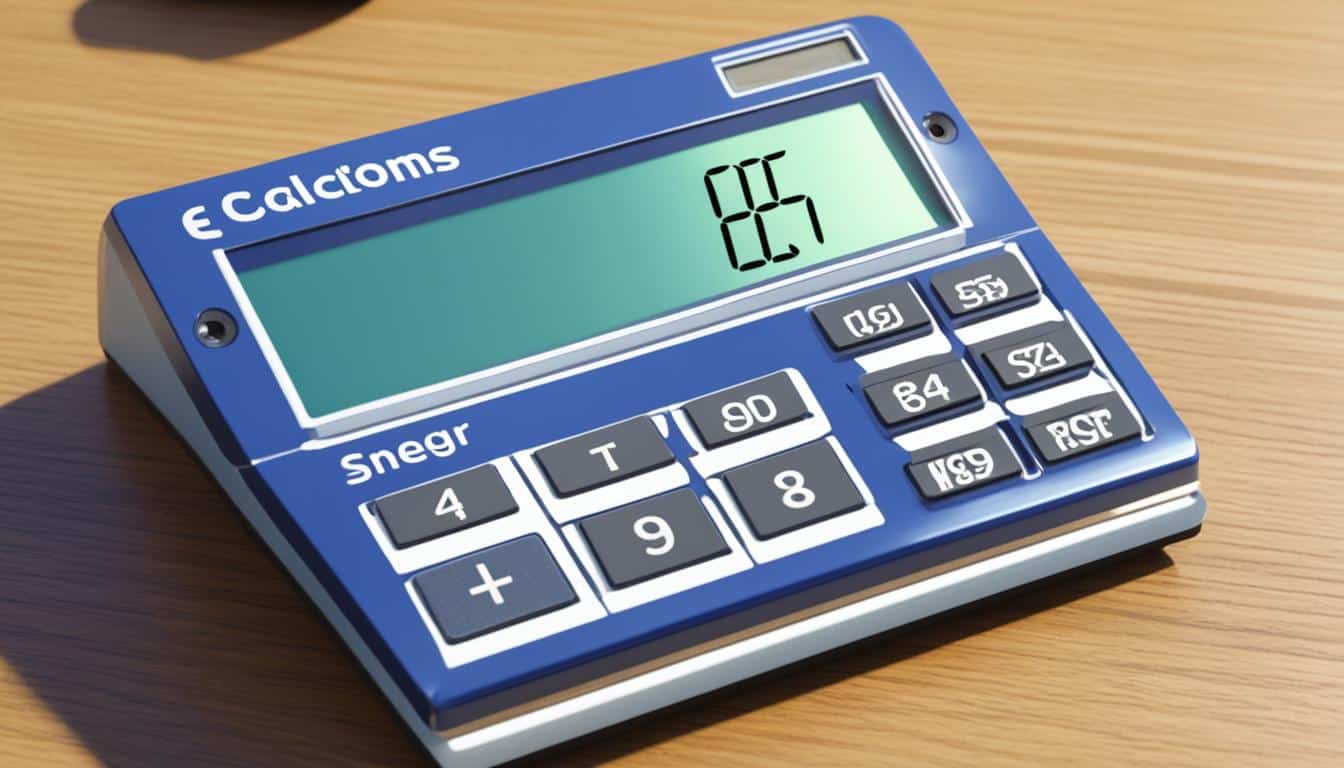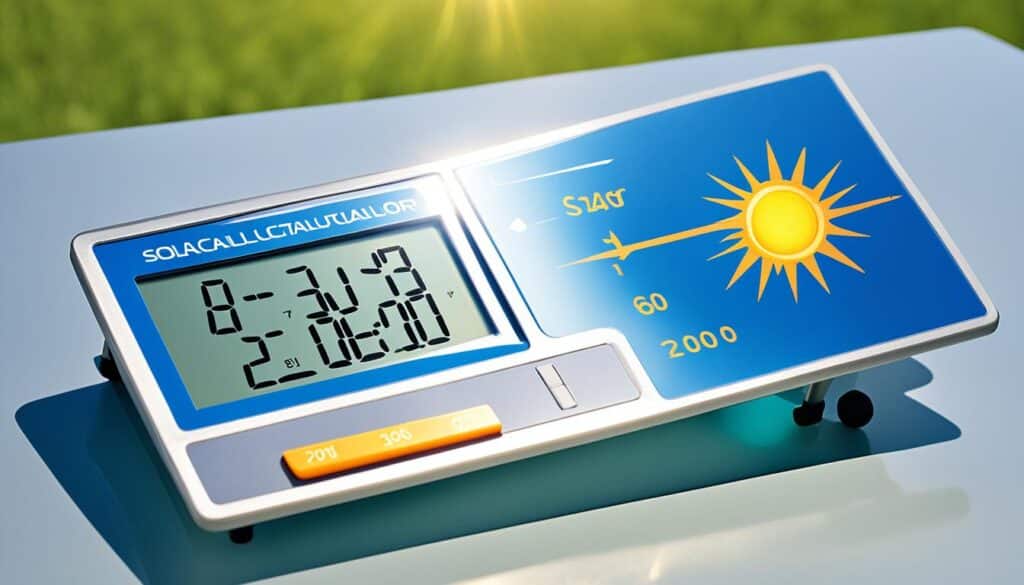
A solar calculator harnesses sunlight to power its functions, undergoing an intricate energy transformation process. By converting solar energy into electrical energy, these calculators eliminate the need for batteries or external power sources. This section explores the energy transformation process of a solar calculator and how it harnesses the power of sunlight.
Key Takeaways
- Solar calculators convert sunlight into electrical energy through an energy transformation process.
- Photovoltaic cells made of silicon are used to convert sunlight into electricity.
- The excitation of electrons in the silicon atoms generates an electric current.
- The direct current (DC) produced is converted into alternating current (AC) using an electronic circuit.
- Solar calculators offer benefits such as sustainability, cost-effectiveness, convenience, and reduced electronic waste.
How Does a Solar Calculator Convert Sunlight into Power?
Solar calculators utilize photovoltaic (PV) cells made of silicon to convert sunlight into electrical energy. These PV cells contain layers of materials that generate an electric current when exposed to sunlight. When sunlight falls on the PV cell, the energy from the photons in the sunlight excites the electrons in the silicon atoms, causing them to flow and generate an electric current. This direct current (DC) produced by the PV cells is then converted into alternating current (AC) using an electronic circuit. The AC power is used to operate the calculator’s display and perform calculations, completing the energy transformation process.

Benefits of Using a Solar Calculator
Solar calculators offer numerous benefits compared to traditional calculators that rely on batteries or external power sources. One of the significant advantages is that solar calculators are powered by renewable energy, reducing dependence on finite resources like batteries. By harnessing the power of the sun, these calculators contribute to a greener and more sustainable future.
Additionally, solar calculators are highly cost-effective. They eliminate the need for frequent battery replacements, saving both money and resources in the long run. With a solar calculator, you can perform calculations without worrying about running out of battery power at a crucial moment. The convenience factor cannot be overlooked either, as solar calculators can be used anywhere there is sunlight. Whether you’re in the office, classroom, or even outdoors, you can rely on a solar calculator to meet your basic calculation needs.
Another advantage is the positive impact on electronic waste reduction. Unlike traditional calculators that require battery disposal, solar calculators do not produce battery waste. This not only minimizes environmental pollution but also contributes to a cleaner and healthier planet. By choosing a solar calculator, you are making a conscious choice towards reducing electronic waste and preserving our natural resources.
In conclusion, solar calculators offer a multitude of benefits. They are efficient, eco-friendly, and cost-effective, making them an ideal choice for both individuals and businesses. By embracing renewable energy and reducing dependence on batteries, solar calculators prove to be a sustainable solution for your everyday calculation needs.
FAQ
How does a solar calculator convert sunlight into power?
A solar calculator utilizes photovoltaic (PV) cells made of silicon to convert sunlight into electrical energy. These PV cells contain layers of materials that generate an electric current when exposed to sunlight. When sunlight falls on the PV cell, the energy from the photons in the sunlight excites the electrons in the silicon atoms, causing them to flow and generate an electric current. This direct current (DC) produced by the PV cells is then converted into alternating current (AC) using an electronic circuit. The AC power is used to operate the calculator’s display and perform calculations, completing the energy transformation process.
What are the benefits of using a solar calculator?
Solar calculators offer several benefits compared to traditional calculators that rely on batteries or external power sources. Firstly, they are powered by renewable energy, reducing dependence on finite resources like batteries. This makes solar calculators environmentally friendly and sustainable. Additionally, solar calculators are cost-effective, as they eliminate the need for frequent battery replacements. They also provide convenience, as they can be used anywhere there is sunlight. Moreover, solar calculators contribute to reducing electronic waste, as they do not require battery disposal. Overall, solar calculators are an efficient, eco-friendly, and cost-effective choice for basic calculation needs.








